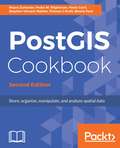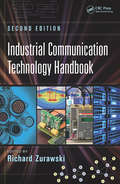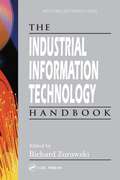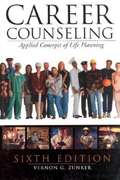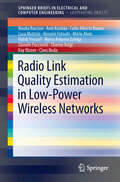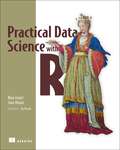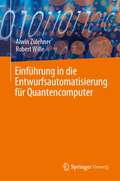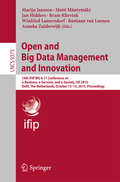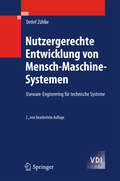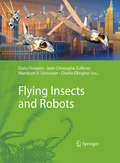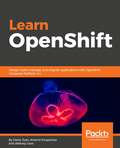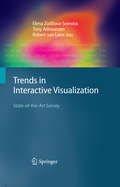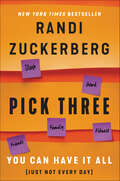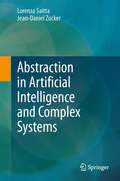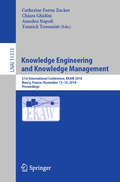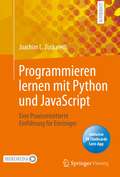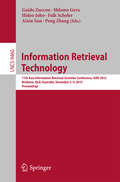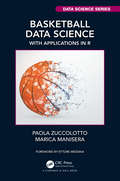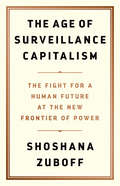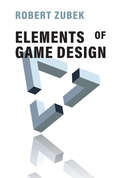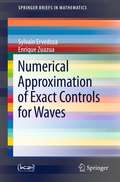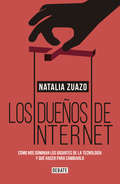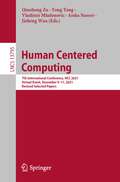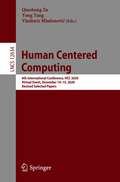- Table View
- List View
Traffic and Granular Flow 2019 (Springer Proceedings in Physics #252)
by Iker Zuriguel Angel Garcimartín Raúl Cruz HidalgoThis book gathers contributions on a variety of flowing collective systems. While primarily focusing on pedestrian dynamics, they also reflect the latest developments in areas such as vehicular traffic and granular flows and address related emerging topics such as self-propelled particles, data transport, swarm behavior, intercellular transport, and collective dynamics of biological systems. Combining fundamental research and practical applications in the various fields discussed, the book offers a valuable asset for researchers and practitioners alike.
PostGIS Cookbook: Store, organize, manipulate, and analyze spatial data, 2nd Edition
by Mayra Zurbarán Thomas Kraft Stephen Vincent Mather Bborie Park Pedro WightmanCreate and manage spatial data with PostGISKey FeaturesImport and export geographic data from the PostGIS database using the available tools Maintain, optimize, and fine-tune spatial data for long-term viability Utilize the parallel support functionality that was introduced in PostgreSQL 9.6Book DescriptionPostGIS is a spatial database that integrates the advanced storage and analysis of vector and raster data, and is remarkably flexible and powerful. PostGIS provides support for geographic objects to the PostgreSQL object-relational database and is currently the most popular open source spatial databases. If you want to explore the complete range of PostGIS techniques and expose related extensions, then this book is for you. This book is a comprehensive guide to PostGIS tools and concepts which are required to manage, manipulate, and analyze spatial data in PostGIS. It covers key spatial data manipulation tasks, explaining not only how each task is performed, but also why. It provides practical guidance allowing you to safely take advantage of the advanced technology in PostGIS in order to simplify your spatial database administration tasks. Furthermore, you will learn to take advantage of basic and advanced vector, raster, and routing approaches along with the concepts of data maintenance, optimization, and performance, and will help you to integrate these into a large ecosystem of desktop and web tools.By the end, you will be armed with all the tools and instructions you need to both manage the spatial database system and make better decisions as your project's requirements evolve.What you will learnImport and export geographic data from the PostGIS database using the available toolsStructure spatial data using the functionality provided by a combination of PostgreSQL and PostGISWork with a set of PostGIS functions to perform basic and advanced vector analysesConnect PostGIS with PythonLearn to use programming frameworks around PostGISMaintain, optimize, and fine-tune spatial data for long-term viabilityExplore the 3D capabilities of PostGIS, including LiDAR point clouds and point clouds derived from Structure from Motion (SfM) techniquesDistribute 3D models through the Web using the X3D standardUse PostGIS to develop powerful GIS web applications using Open Geospatial Consortium web standardsMaster PostGIS RasterWho this book is forThis book is for developers who need some quick solutions for PostGIS. Prior knowledge of PostgreSQL and spatial concepts would be an added advantage.
Industrial Communication Technology Handbook (Industrial Information Technology #8)
by Richard ZurawskiFeaturing contributions from major technology vendors, industry consortia, and government and private research establishments, the Industrial Communication Technology Handbook, Second Edition provides comprehensive and authoritative coverage of wire- and wireless-based specialized communication networks used in plant and factory automation, automotive applications, avionics, building automation, energy and power systems, train applications, and more. New to the Second Edition: 46 brand-new chapters and 21 substantially revised chapters Inclusion of the latest, most significant developments in specialized communication technologies and systems Addition of new application domains for specialized networks The Industrial Communication Technology Handbook, Second Edition supplies readers with a thorough understanding of the application-specific requirements for communication services and their supporting technologies. It is useful to a broad spectrum of professionals involved in the conception, design, development, standardization, and use of specialized communication networks as well as academic institutions engaged in engineering education and vocational training.
The Industrial Information Technology Handbook (Industrial Electronics)
by Richard ZurawskiThe Industrial Information Technology Handbook focuses on existing and emerging industrial applications of IT, and on evolving trends that are driven by the needs of companies and by industry-led consortia and organizations. Emphasizing fast growing areas that have major impacts on industrial automation and enterprise integration, the Handbook covers topics such as industrial communication technology, sensors, and embedded systems.The book is organized into two parts. Part 1 presents material covering new and quickly evolving aspects of IT. Part 2 introduces cutting-edge areas of industrial IT. The Handbook presents material in the form of tutorials, surveys, and technology overviews, combining fundamentals and advanced issues, with articles grouped into sections for a cohesive and comprehensive presentation. The text contains 112 contributed reports by industry experts from government, companies at the forefront of development, and some of the most renowned academic and research institutions worldwide. Several of the reports on recent developments, actual deployments, and trends cover subject matter presented to the public for the first time.
Career Counseling: Applied Concepts Of Life Planning
by Vernon G. ZunkerThis successful and popular book has been completely updated to give you the most recent information on emerging theories, recent research, and current computer-assisted guidance programs in career counseling! Whether you are a counselor or a counselor-in-training, you'll appreciate the way Vernon Zunker presents practical techniques and real-life examples as he patiently helps you understand the theoretical models of career counseling and how to effectively counsel clients about career issues. In the Sixth Edition, you'll find Zunker's clear writing style and interesting exercises, as well as: *Five career counseling models with case illustrations *A new Chapter 8, "Self-Assessment and a Model for Using Assessment," which discusses the rationale for using self-assessment tools *A new Chapter 15, "Career Counseling for Gay, Lesbian, and Bisexual Clients," which helps familiarize you with the issues and needs of this client population *Theories of career development and counseling models-summarized in tables to help you study and prepare for the licensing examination *Web site information that points you to additional, reliable information online *And much more!
Radio Link Quality Estimation in Low-Power Wireless Networks
by Marco Antonio Zuniga Carlo Alberto Boano Claro Noda Luca Mottola Habib Youssef Hossein Fotouhi Daniele Puccinelli Anis Koubâa Kay Römer Mário Alves Nouha Baccour Thiemo VoigtThis book provides a comprehensive survey on related work for radio link quality estimation, which covers the characteristics of low-power links, the fundamental concepts of link quality estimation in wireless sensor networks, a taxonomy of existing link quality estimators and their performance analysis. It then shows how link quality estimation can be used for designing protocols and mechanisms such as routing and hand-off. The final part is dedicated to radio interference estimation, generation and mitigation.
Practical Data Science with R
by Nina Zumel John Mount"Practical Data Science with R" lives up to its name. It explains basic principles without the theoretical mumbo-jumbo and jumps right to the real use cases you'll face as you collect, curate, and analyze the data crucial to the success of your business. You'll apply the R programming language and statistical analysis techniques to carefully explained examples based in marketing, business intelligence, and decision support.
Einführung in die Entwurfsautomatisierung für Quantencomputer
by Alwin Zulehner Robert WilleDieses Buch bietet dem Leser einen einfachen Einstieg in das Quantencomputing sowie in den Entwurf entsprechender Geräte. Die Autoren behandeln verschiedene Entwurfsaufgaben, die für das Quantencomputing wichtig sind, und stellen entsprechende Lösungen vor. Eine Besonderheit des Buches ist, dass diese Aufgaben und Lösungen explizit aus der Perspektive der Entwurfsautomatisierung diskutiert werden, d.h. unter Verwendung von cleveren Algorithmen und Datenstrukturen, die von der Entwurfsautomatisierungs-Community für konventionelle Logik (d.h. für elektronische Geräte und Systeme) entwickelt worden sind und nun für diese neue Technologie angewendet werden. Auf diese Weise können relevante Entwurfsaufgaben wesentlich effizienter als bisher durchgeführt werden, was zu Verbesserungen um mehrere Größenordnungen führt (in Bezug auf die Laufzeit und andere Entwurfsziele). Beschreibt den aktuellen Stand der Technik für den Entwurf von Quantenschaltungen, für deren Simulation und für deren Abbildung auf reale Hardware; Bietet eine erste umfassende Einführung in die Entwurfsautomatisierung für Quantencomputer, die sich mit praxisrelevanten Aufgabenstellungen befasst; Es richtet sich sowohl an die Quantencomputer-Gemeinschaft als auch an die Gemeinschaft der Entwurfsautomatisierung und zeigt, welche beeindruckenden Verbesserungen möglich sind, wenn man das Wissen beider Gemeinschaften kombiniert.
Open and Big Data Management and Innovation
by Anneke Zuiderwijk Bastiaan Van Loenen Winfried Lamersdorf Bram Klievink Jan Hidders Matti Mäntymäki Marijn JanssenThis book constitutes the refereed conference proceedings of the 14th IFIP WG 6. 11 Conference on e-Business, e-Services and e-Society, I3E 2015, held in Delft, The Netherlands, in October 2015. The 40 revised full papers presented together with 1 keynote panel were carefully reviewed and selected from 65 submissions. They are organized in the following topical sections: adoption; big and open data; e-business, e-services,, and e-society; and witness workshop.
Nutzergerechte Entwicklung von Mensch-Maschine-Systemen
by Detlef ZühlkeDas Buch gibt Entwicklern einen Leitfaden zur nutzergerechten Gestaltung von Mensch-Maschine-Systemen an die Hand. Dabei werden die besonderen Gestaltungsprobleme von Useware-Systemen für internationale Märkte ebenso behandelt wie die Auswahl von Entwicklungstools, Normen und Richtlinien sowie grundlegende Gestaltungsregeln. Wichtige Neuerungen, etwa die modellbasierte Entwicklung von Benutzungsschnittstellen oder zukünftige Interaktionsformen, werden in der Neuauflage anhand von Gestaltungsbeispielen vorgestellt.
Flying Insects and Robots
by Jean-Christophe Zufferey Mandyam V. Srinivasan Dario Floreano Charlie EllingtonFlying insects are intelligent micromachines capable of exquisite maneuvers in unpredictable environments. Understanding these systems advances our knowledge of flight control, sensor suites, and unsteady aerodynamics, which is of crucial interest to engineers developing intelligent flying robots or micro air vehicles (MAVs). The insights we gain when synthesizing bioinspired systems can in turn benefit the fields of neurophysiology, ethology and zoology by providing real-life tests of the proposed models. This book was written by biologists and engineers leading the research in this crossdisciplinary field. It examines all aspects of the mechanics, technology and intelligence of insects and insectoids. After introductory-level overviews of flight control in insects, dedicated chapters focus on the development of autonomous flying systems using biological principles to sense their surroundings and autonomously navigate. A significant part of the book is dedicated to the mechanics and control of flapping wings both in insects and artificial systems. Finally hybrid locomotion, energy harvesting and manufacturing of small flying robots are covered. A particular feature of the book is the depth on realization topics such as control engineering, electronics, mechanics, optics, robotics and manufacturing. This book will be of interest to academic and industrial researchers engaged with theory and engineering in the domains of aerial robotics, artificial intelligence, and entomology.
Learn OpenShift: Deploy, build, manage, and migrate applications with OpenShift Origin 3.9
by Denis Zuev Aleksey Usov Artemii KropachevGain hands-on experience of installing OpenShift Origin 3.9 in a production configuration and managing applications using the platform you builtKey FeaturesGain hands-on experience of working with Kubernetes and DockerLearn how to deploy and manage applications in OpenShiftGet a practical approach to managing applications on a cloud-based platformExplore multi-site and HA architectures of OpenShift for productionBook DescriptionDocker containers transform application delivery technologies to make them faster and more reproducible, and to reduce the amount of time wasted on configuration. Managing Docker containers in the multi-node or multi-datacenter environment is a big challenge, which is why container management platforms are required. OpenShift is a new generation of container management platforms built on top of both Docker and Kubernetes. It brings additional functionality to the table, something that is lacking in Kubernetes. This new functionality significantly helps software development teams to bring software development processes to a whole new level.In this book, we’ll start by explaining the container architecture, Docker, and CRI-O overviews. Then, we'll look at container orchestration and Kubernetes. We’ll cover OpenShift installation, and its basic and advanced components. Moving on, we’ll deep dive into concepts such as deploying application OpenShift. You’ll learn how to set up an end-to-end delivery pipeline while working with applications in OpenShift as a developer or DevOps. Finally, you’ll discover how to properly design OpenShift in production environments.This book gives you hands-on experience of designing, building, and operating OpenShift Origin 3.9, as well as building new applications or migrating existing applications to OpenShift.What you will learnUnderstand the core concepts behind containers and container orchestration toolsUnderstand Docker, Kubernetes, and OpenShift, and their relation to CRI-OInstall and work with Kubernetes and OpenShiftUnderstand how to work with persistent storage in OpenShiftUnderstand basic and advanced components of OpenShift, including security and networkingManage deployment strategies and application’s migration in OpenShiftUnderstand and design OpenShift high availability Who this book is forThe book is for system administrators, DevOps engineers, solutions architects, or any stakeholder who wants to understand the concept and business value of OpenShift.
Trends in Interactive Visualization
by Elena Zudilova-Seinstra Tony Adriaansen Robert Van LiereThe purpose of Interactive Visualization is to develop new scientific methods to increase scientists' abilities to explore data and to understand better the results of experiments based on extensive calculations. These techniques not only provide users with a possibility to view the data but also permit them to use interaction capabilities to interrogate and navigate through datasets and communicate these insights. This book is a unique multi-disciplinary collection of scientific articles, which provides readers with insight in Interactive Visualization from various perspectives, representing the state-of-the-art with the special emphasis on: Advanced visualization algorithms and methods, Interactive data exploration, Display systems and interaction techniques, Multi-modal and collaborative visualization, Design and evaluation of interactive visualization tools and systems, Various application topics.
Pick Three: You Can Have It All (Just Not Every Day)
by Randi ZuckerbergA New York Times bestseller!In this motivational handbook—both a business how-to and self-help guide—the New York Times bestselling author of Dot Complicated takes on the fallacy of the "well-balanced" life, arguing that the key to success is learning to be well-lopsided.Work. Sleep. Fitness. Family. Friends. Pick Three.In an increasingly demanding world, we’ve been told that we can do everything—maintain friendships, devote ourselves to work, spend time with family, stay fit, and get enough sleep. We just need to learn to balance it all. Randi Zuckerberg doesn’t believe in being well-balanced. We can’t do it all every day, she contends, and trying to do so only leaves us frustrated and feeling inadequate. But we can succeed if we Pick Three.Randi first introduced the concept of Pick Three in a tweet—"The Entrepreneur’s Dilemma"—that went viral. Now, in this book, she expands on her philosophy and inspires others to follow her lead. From entrepreneurs to professionals, busy parents to students, Randi can help everyone learn to reject the unrealistic burden of balance and enjoy success in their own lives—by picking the most important areas to focus on in any given day.This practical handbook includes stories from Randi’s career learning that there’s no such thing as a perfect balance—as well as insights and examples from other professionals at the top of the biggest businesses in Silicon Valley, new moms searching for permission to focus on family, and recent graduates convinced they should have it all under control, including Arianna Huffington, Reshma Saujani, Laurie Hernandez, and Brad Takei. We can’t have it all every day, and that’s okay, Randi reminds us. Pick Three is her much-needed guide to learning to embrace the well-lopsided life.
Abstraction in Artificial Intelligence and Complex Systems
by Jean-Daniel Zucker Lorenza SaittaAbstraction is a fundamental mechanism underlying both human and artificial perception, representation of knowledge, reasoning and learning. This mechanism plays a crucial role in many disciplines, notably Computer Programming, Natural and Artificial Vision, Complex Systems, Artificial Intelligence and Machine Learning, Art, and Cognitive Sciences. This book first provides the reader with an overview of the notions of abstraction proposed in various disciplines by comparing both commonalities and differences. After discussing the characterizing properties of abstraction, a formal model, the KRA model, is presented to capture them. This model makes the notion of abstraction easily applicable by means of the introduction of a set of abstraction operators and abstraction patterns, reusable across different domains and applications. It is the impact of abstraction in Artificial Intelligence, Complex Systems and Machine Learning which creates the core of the book. A general framework, based on the KRA model, is presented, and its pragmatic power is illustrated with three case studies: Model-based diagnosis, Cartographic Generalization, and learning Hierarchical Hidden Markov Models.
Knowledge Engineering and Knowledge Management: 21st International Conference, EKAW 2018, Nancy, France, November 12-16, 2018, Proceedings (Lecture Notes in Computer Science #11313)
by Catherine Faron Zucker Chiara Ghidini Amedeo Napoli Yannick ToussaintThis book constitutes the refereed proceedings of the 21th International Conference on Knowledge Engineering and Knowledge Management, EKAW 2018, held in Nancy, France, in November 2018. The 36 full papers presented were carefully reviewed and selected from 104 submissions. The papers cover all aspects of eliciting, acquiring, modeling, and managing knowledge, the construction of knowledge-intensive systems and services for the Semantic Web, knowledge management, e-business, natural language processing, intelligent information integration, personal digital assistance systems, and a variety of other related topics. A special focus was on "Knowledge and AI", i.e. papers describing algorithms, tools, methodologies, and applications that exploit the interplay between knowledge and Artificial Intelligence techniques, with a special emphasis on knowledge discovery.
Programmieren lernen mit Python und JavaScript: Eine praxisorientierte Einführung für Einsteiger
by Joachim L. ZuckarelliOb auf dem Computer, Tablet, Handy, im Auto oder in der Kaffeemaschine – Computerprogramme bestimmen unseren Alltag. Software wird immer wichtiger, kaum noch etwas funktioniert ohne die geheimnisvolle Macht der Algorithmen. Aber wie funktionieren Programme? Und wie entwickelt man sie? Dieses Buch vermittelt Ihnen anschaulich das Einmaleins des Programmierens. Anhand von Alltagsbeispielen lernen Sie zunächst die Grundkonzepte des Programmierens kennen, die in allen Programmiersprachen ähnlich sind. Auf Basis dieser Grundideen erlernen Sie dann auf systematische Weise und mit vielen praktischen Übungen zwei populäre und sehr nützliche Programmiersprachen, Python und JavaScript, die Sie für ein breites Spektrum an unterschiedlichen Aufgaben einsetzen können.Das Buch richtet sich an Programmieranfänger aller Altersklassen (vom Schüler bis zum Berufstätigen), die bisher keinerlei Programmiererfahrung besitzen.Zusätzliche Fragen per App: Laden Sie die Springer Nature Flashcards-App kostenlos herunter und nutzen Sie exklusives Zusatzmaterial als Printbuchkäufer, um Ihr Wissen zu prüfen.
Information Retrieval Technology
by Guido Zuccon Shlomo Geva Hideo Joho Falk Scholer Aixin Sun Peng ZhangThis book constitutes the refereed proceedings of the11th Information Retrieval Societies Conference, AIRS 2015, held in Brisbane,QLD, Australia, in December 2015. The 29 full papers presented together with 11 short anddemonstration papers, and the abstracts of 2 keynote lectures were carefullyreviewed and selected from 92 submissions. The final programme of AIRS 2015 isdivided in 10 tracks: Efficiency, Graphs, Knowledge Bases and Taxonomies,Recommendation, Twitter and Social Media, Web Search, Text Processing,Understanding and Categorization, Topics and Models, Clustering, Evaluation,and Social Media and Recommendation.
Basketball Data Science: With Applications in R (Chapman & Hall/CRC Data Science Series)
by Paola Zuccolotto Marica ManiseraUsing data from one season of NBA games, Basketball Data Science: With Applications in R is the perfect book for anyone interested in learning and applying data analytics in basketball. Whether assessing the spatial performance of an MBA player&’s shots or doing an analysis of the impact of high pressure game situations on the probability of scoring, this book discusses a variety of case studies and hands-on examples using a custom R package. The codes are supplied so readers can reproduce the analyses themselves or create their own. Assuming a basic statistical knowledge, Basketball Data Science with R is suitable for students, technicians, coaches, data analysts and applied researchers. Features: · One of the first books to provide statistical and data mining methods for the growing field of analytics in basketball. · Presents tools for modelling graphs and figures to visualize the data. · Includes real world case studies and examples, such as estimations of scoring probability using the Golden State Warriors as a test case. · Provides the source code and data so readers can do their own analyses on NBA teams and players.
The Age of Surveillance Capitalism: The Fight for a Human Future at the New Frontier of Power
by Shoshana ZuboffThe challenges to humanity posed by the digital future, the first detailed examination of the unprecedented form of power called "surveillance capitalism," and the quest by powerful corporations to predict and control our behavior. <P><P>Shoshana Zuboff's interdisciplinary breadth and depth enable her to come to grips with the social, political, business, and technological meaning of the changes taking place in our time. We are at a critical juncture in the confrontation between the vast power of giant high-tech companies and government, the hidden economic logic of surveillance capitalism, and the propaganda of machine supremacy that threaten to shape and control human life. <P><P>Will the brazen new methods of social engineering and behavior modification threaten individual autonomy and democratic rights and introduce extreme new forms of social inequality? Or will the promise of the digital age be one of individual empowerment and democratization? <P><P>The Age of Surveillance Capitalism is neither a hand-wringing narrative of danger and decline nor a digital fairy tale. Rather, it offers a deeply reasoned and evocative examination of the contests over the next chapter of capitalism that will decide the meaning of information civilization in the twenty-first century. The stark issue at hand is whether we will be the masters of information and machines or its slaves.
Elements of Game Design
by Robert ZubekAn introduction to the basic concepts of game design, focusing on techniques used in commercial game production.This textbook by a well-known game designer introduces the basics of game design, covering tools and techniques used by practitioners in commercial game production. It presents a model for analyzing game design in terms of three interconnected levels--mechanics and systems, gameplay, and player experience--and explains how novice game designers can use these three levels as a framework to guide their design process. The text is notable for emphasizing models and vocabulary used in industry practice and focusing on the design of games as dynamic systems of gameplay.
Numerical Approximation of Exact Controls for Waves
by Enrique Zuazua Sylvain ErvedozaThis book is devoted to fully developing and comparing the two main approaches to the numerical approximation of controls for wave propagation phenomena: the continuous and the discrete. This is accomplished in the abstract functional setting of conservative semigroups.The main results of the work unify, to a large extent, these two approaches, which yield similaralgorithms and convergence rates. The discrete approach, however, gives not only efficient numerical approximations of the continuous controls, but also ensures some partial controllability properties of the finite-dimensional approximated dynamics. Moreover, it has the advantage of leading to iterative approximation processes that converge without a limiting threshold in the number of iterations. Such a threshold, which is hard to compute and estimate in practice, is a drawback of the methods emanating from the continuous approach. To complement this theory, the book provides convergence results for the discrete wave equation when discretized using finite differences and proves the convergence of the discrete wave equation with non-homogeneous Dirichlet conditions. The first book to explore these topics in depth, "On the Numerical Approximations of Controls for Waves" has rich applications to data assimilation problems and will be of interest to researchers who deal with wave approximations.
Los dueños de internet: Cómo nos dominan los gigantes de la tecnología y qué hacer para cambiarlo
by Natalia ZuazoEste libro propone cambiar la lógica monopólica de internet y adueñarnos de nuestro propio modo de relacionarnos con la tecnología para vivir en un mundo más equitativo. En este preciso instante, la mitad de las personas están conectadas a Google, Microsoft, Facebook, Apple y Amazon. En los últimos años, las grandes plataformas tecnológicas se convirtieron en las empresas más ricas del planeta sin usar la violencia. Su poder se consolidó gracias a los millones de usuarios como nosotros que les confían su atención y sus datos a través de teléfonos móviles y algoritmos. Hoy internet es un club de cinco grandes monopolios que generan desigualdad. Un puñado de corporaciones domina el mundo como antes lo hicieron las potencias coloniales. ¿Cómo construyó Microsoft un imperio del conocimiento? ¿Cómo predice Google nuestros movimientos? ¿Cómo cimentó Facebook su poderío informativo? ¿Cómo maneja Uber el mundo de transporte? Pero sobre todo, ¿cómo podemos revertir esta situación? En este libro, la periodista especializada en tecnopolítica Natalia Zuazo se sumerge en el universo de estas grandes corporaciones para entender sus fines. Y cuenta otras historias donde la tecnología está siendo usada con otra lógica: la de una sociedad más equitativa. "Las grandes plataformas tecnológicas son los monopolios que hoy dominan el mundo. Unos pocos jugadores controlan la actividad en cada sector. Google lidera las búsquedas, la publicidad y el aprendizaje automatizado. Facebook, el mercado de las noticias y la información. Amazon dirige el comercio en gran parte de Occidente mientras avanza en generar y distribuir sus propios productos. Uber no sólo quiere intermediar y ganar dinero con cada viaje, sino que busca convertirse en la empresa que transporte los bienes del futuro, incluso sin necesidad de conductores. Con remera y un ejército de relacionistas públicos que difunden anuncios a favor de los más necesitados, hoy el Club de los Cinco ha conquistado el mundo como antes lo hicieron las grandes potencias. La diferencia es que en vez de construir palacios y grandes murallas, se instalan en oficinas abiertas y llenas de luz en Silicon Valley. Y en lugar de evangelizar con sacerdotes y predicadores, se nutren del capitalismo del like y de cada dato que cedemos de nuestra vida. Cien años después, vivimos un nuevo colonialismo."
Human Centered Computing: 7th International Conference, HCC 2021, Virtual Event, December 9–11, 2021, Revised Selected Papers (Lecture Notes in Computer Science #13795)
by Qiaohong Zu Yong Tang Vladimir Mladenovic Aisha Naseer Jizheng WanThis book constitutes thoroughly reviewed, revised and selected papers from the 7th International Conference on Human Centered Computing, HCC 2021, held in virtually, due to COVID- 19, in December 2021. The 18 full and 9 short papers presented in this volume were carefully reviewed and selected from a total of 68 submissions. The conference focuses on the following three main themes as follows: Data such as Data Visualization, Big Data, Data Security, Hyper connectivity such as Internet of Things, Cloud Computing, Mobile Network and Collaboration such as Collective Intelligence, Peer Production, Context Awareness and much more.
Human Centered Computing: 6th International Conference, HCC 2020, Virtual Event, December 14–15, 2020, Revised Selected Papers (Lecture Notes in Computer Science #12634)
by Qiaohong Zu Yong Tang Vladimir MladenovićThis book constitutes thoroughly reviewed, revised and selected papers from the 6th International Conference on Human Centered Computing, HCC 2020, held in virtually, due to COVID- 19, in December 2020. The 28 full and 20 short papers presented in this volume were carefully reviewed and selected from a total of 133 submissions.The conference focuses on the following three main themes as follows: Data such as Data Visualization, Big Data, Data Security, Hyper connectivity such as Internet of Things, Cloud Computing, Mobile Network and Collaboration such as Collective Intelligence, Peer Production, Context Awareness and much more.

